
What Is a Reverse Proof Coin?
There’s nothing common about these coins! Before we describe the Reverse Proof coin, let’s make sure we’re clear on our coin terms. A PROOF coin
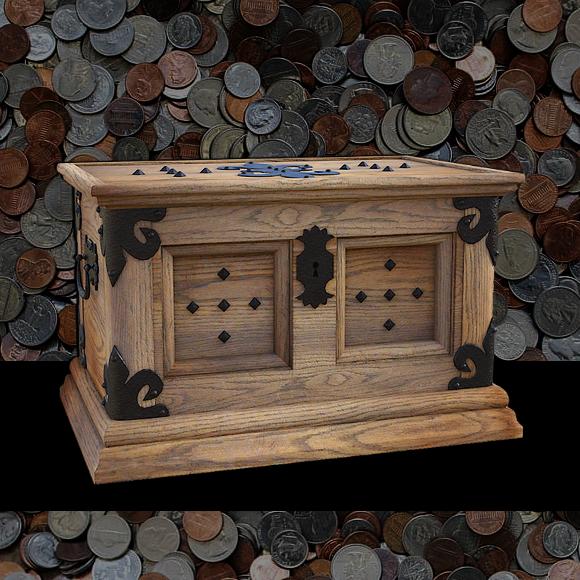
You have a substantial investment in your coins. How do you protect them?
At times, it’s important to hide your coins.
During the Great Depression, over 100,000 business failed and over 5000 banks collapsed, denying the bank customers their valuables. Where they still could, people were withdrawing their assets from banks. If things continued the way they were, the banking industry would have collapsed.
In 1933, President Franklin Delano Roosevelt shut down the banks for almost two weeks. When they opened back up, withdrawals were limited. He also ordered that the private hoarding of gold, gold bullion and gold certificates was illegal. Use of gold coins in circulation also became illegal. The gold that people had, with a few small exceptions, were to be sold to the U.S. government at a mandated price. Many complied with the order and sold their gold to the government. Many others hid their gold.
For a brief time, silver was also ordered to be sold to the government. About a year after the seizure of gold, many silver products were also targeted. Per J.M. Bullion, the order did the following, “The Roosevelt administration’s Executive Order 6814 was an effective nationalization of all domestically mined silver and privately owned silver bullion. Exceptions included circulating silver and foreign silver coins and a few other items. All other privately owned silver bullion stocks were mandated to be turned into US Mint locations and purchased by the US government at 50¢ oz. Domestically mined silver was purchased at a premium of 64.5¢ oz.”
This order only lasted ninety days. Even so, it prompted many to hide their silver.
Most people never have trouble protecting the contents in their safety deposit boxes. Statistically speaking, theft of the items in these boxes is low. But where trouble does arise, understand that the bank will most likely fight you if you try to reclaim the value of very expensive items lost.
The bank charges fees for the rental of the safety deposit box. If you don’t pay the fees and you don’t pick up your valuables, the items can become forfeit. They are typically held for a period designated by the State the box is in. After that period, the State can decide which items they will take and which are left to the bank. The bank can then auction them off or do as they will. (See the Unclaimed Property section below.)
The bank does not carry insurance for your valuables. YOU can carry insurance for the items in your box through your own insurance provider. But the bank won’t.
The bank may have a policy to recompense the loss of some of the value items. But this may be FAR LESS than the value of the items missing.
If you owe taxes to the I.R.S. they can levy your assets, including the contents of your safety deposit box(s).
Losing a lawsuit can cause the contents of the safety deposit box(s) to be seized.
Bank policies can change. Often the changes in their policies will be sent in the mail. In a lawsuit lawyers on both sides of the case would fight about these changes. Regardless, you can’t be assured that the agreements you make will be adhered to without a court battle.
Remember that banks fall heavily under the order of the Federal Government. How much do you trust the government with your prized possessions?
Bank accounts, contents of safety deposit boxes, coin collections and similar assets that go unclaimed for several years can end up sitting in the coffers of the State that the property went unclaimed in. The assets sit there and the State can use them to earn interest, etc. Billions go unclaimed. There are processes where these unclaimed assets can be recovered. If you feel there may be unclaimed property that you are entitled to, you could check by using the following website from the Federal Government.
Click here.
Safes are designed to protect against theft, fire and sometimes water. If you are going to get a safe studying and comparing the different safes is a good idea.
There are two types of safes that are designed to be hidden. These are wall safes and floor safes.
Wall safes are rather easy to conceal because they can be placed behind things mounted on the wall, like pictures. They are typically shallow. Often, not much can be placed in a wall safe. Usually, these safes won’t be as thick because they are relying on the fact that they are hidden.
Floor safes are built right into the floor. They are typically thick and hard to get into. However, they have to be built into the floor. Haphazardly tearing up some floor in your house isn’t a good idea. So, this one requires planning. Also, these safes are not necessarily waterproof. You have to bear that in mind.
There are a plethora of other types of safes. I will show two popular ones here.
Common safes for the home (not built into the wall or floor) have a capacity of 1.2 to 1.3 cubic feet. These could hold a small collection.
Larger safes could hold a large collection. It may be large and imposing to thieves. It’s also heavy and thick.
Safes of this caliber are expensive. Companies offering such may provide financing.

Photo by Wikipedia
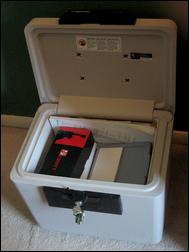
Photo by Wikipedia
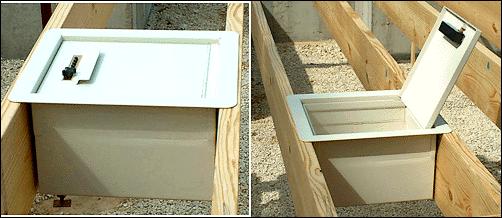
Photo by STASHVAULT
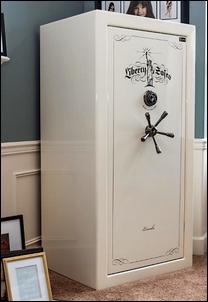
Photo by Liberty Safe
The Master Bedroom is a no-no. Many people hide their safes there and it is a common area for a thief to look. One may consider putting a dummy safe in the master bedroom and the real safe elsewhere.
Concealment is key. If they don’t see it, they don’t have a chance to get into it. Be clever. Put it in an area where no one will notice it. For large safes curtains can be purchased which hide the fact that it is a safe. Watch the videos from ACME Safe in the References section below for much more information on the subject of hiding a safe.
A safe is an impenetrable barrier not only to thieves but also to you if you lose your passwords, keys and / or combinations. Have a system where these things can be recovered if you forget what they are. Also, the safe company gives an instruction booklet which, along with your receipt, should not be discarded. You may have to call them, or use the info in the book.
If you do forget the combination, a locksmith can probably get it open for you. Most likely you will have to provide proof of ownership before they will help you. This is yet another reason why you keep the documentation that came with your safe as well as the receipt.
You can hide your coins and valuables in common items like coffee cans, vents and dressers. But, consider the consequences. Anyone coming to your house can come in contact with these things. They can be accidentally put in garage sales or thrown away. They provide no protection against water, fire, etc.
Some makeshift hiding places can be quite brilliant. During the Depression when gold was being gathered by the government, one man had a clever idea. He removed the handle from a bread roller, drilled out the core and placed his gold inside. He filled it with $20.00 gold eagle coins and then put the handle back on. It made for a heavy bread roller, but his gold was nicely hidden.
On the other hand, an old farmer in Michigan amassed quite a sizable gold hoard. He passed and never told anyone where it was. To this day it is assumed that gold is still where he put it, probably buried where no one has ever found it.
If you don’t have an inventory of your valuables, like your coins, how will you know if any are missing? How will you know how much you paid for them?
An inventory should be simple above all else.
You could use a spreadsheet. Or, you could use various coin collecting programs. Either way, you should keep a list of your items and the items on the list should have pictures of the items.
Many items purchased these days are purchased online. The receipt often will have a picture of the item. If you print off a copy of the receipt that has a photo, you could use this in your inventory.
The purpose that many have for building up a collection of coins and other assets is so that they can leave them to loved ones in the future. Consider where the collection will be safe. And, consider who you can trust to know where it is. Should unfortunate circumstances arise and you depart this world before you are ready, you don’t want your coins and valuables to be lost. All that work will be for nothing if the people it is intended for don’t know where it is when you pass (or are incapacitated).
Determine who you can trust. Put the collection in a secure, well kept, dry, temperate location where they can find it when it’s needed. Then your purpose can be fulfilled.
J.M. Bullion – FDR’s Silver Nationalization 1934
https://www.jmbullion.com/investing-guide/buying-physical-metals/fdr-silver-nationalization-1934/
S.D. Bullion – Gold Confiscation? | Executive Order 6102 | Silver Confiscation?
https://sdbullion.com/blog/gold-confiscation-executive-order-6102-silver-confiscation#:~:text=In%201933%20and%201934%20the,local%20Federal%20Reserve%20bank%20branches
Landmark Capital – Financial Conspiracies Financial Conspiracies: Fed Seizes Gold Assets in 1933
https://landmarkgold.com/financial-conspiracies-fed-seizes-gold-assets-in-1933/
The Daily News – The closing of the banks in 1933
https://www.newburyportnews.com/opinion/the-closing-of-the-banks-in-1933/article_b728d9e2-5fb2-590f-a32e-670e8bdb794c.html
The New York Times – Safe Deposit Boxes Aren’t Safe
https://www.nytimes.com/2019/07/19/business/safe-deposit-box-theft.html
U.S. Money Reserve – Did FDR confiscate Americans’ gold in 1933?
https://www.usmoneyreserve.com/blog/did-fdr-confiscate-americans-gold-in-1933/
Uppo – Unclaimed Property Focus
https://www.usa.gov/unclaimed-money#:~:text=Businesses%20send%20money%20to%20state,your%20state’s%20unclaimed%20property%20office
YouTube – 3 Types of Concealed Safes – How Do You Hide a Safe?
https://www.youtube.com/watch?v=AfWeVXzfkk8
YouTube – Where to Hide a Safe – Best & Worst Places to Hide a Safe in Your House
https://www.youtube.com/watch?v=uEv7u0WFHww
USA.GOV – Unclaimed Money From the Government
https://www.usa.gov/unclaimed-money#:~:text=Businesses%20send%20money%20to%20state,your%20state’s%20unclaimed%20property%20office

There’s nothing common about these coins! Before we describe the Reverse Proof coin, let’s make sure we’re clear on our coin terms. A PROOF coin
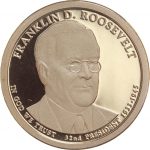
When people think about collecting coins, they usually only think with collecting American coins. I mean that makes sense right? Live in the USA and

“Great respect or importance.” That is the definition of “Prestige”. The purpose of the Prestige set was to showcase proof coins and commemorative proof coins
The easiest way to get in contact with us is by filling out the form and submitting it.
We will contact you as soon as we can.
David Enders
PO Box 508
Athens MI 49011
The Dave’s Collectible Coins customer service goal is simple:
We are committed to providing our customers total satisfaction. Every time. Guaranteed.
For non-urgent matters please use the form in this popup. For urgent matters please call 269-742-4716.
Customer service is available Monday – Friday 8:00am – 4:30pm EST